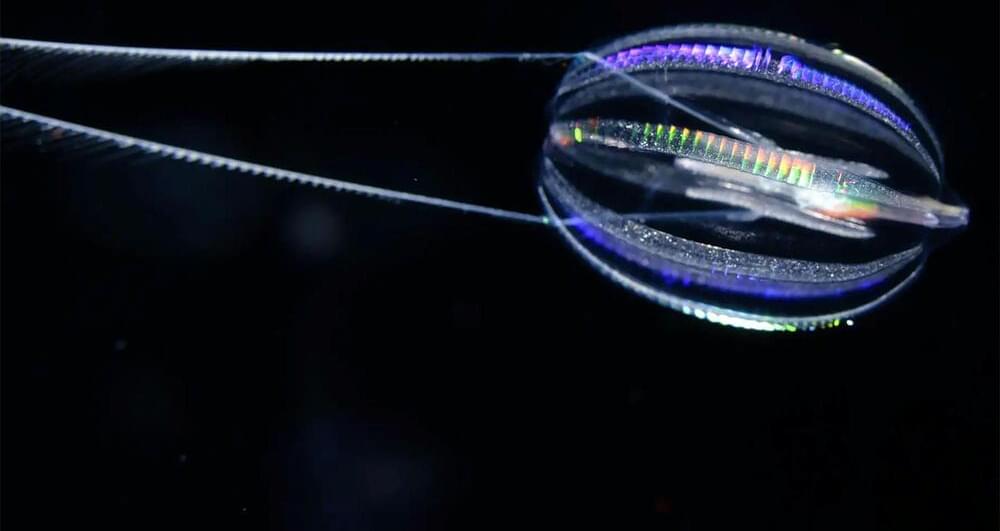The James Webb Space Telescope took its first close look at a “mini-Neptune” — the most common type of planet beyond our solar system — and found signs of water.



This may sound like a science fiction scenario, but some physicists have proposed that this could be the case. In this article, we will explore the idea that our universe may be inside of a black hole, and what implications this would have for our understanding of cosmology and physics.
A black hole is a region of space where gravity is so strong that nothing can escape, not even light. According to Einstein’s theory of general relativity, black holes are formed when massive stars collapse at the end of their life cycle. The resulting singularity is a point of infinite density and zero volume, where the laws of physics break down.
Scientists discover possible connection between human brain and cosmos on a quantum scale.

Scientists have announced that the oldest living creature on our planet is a jellyfish-like organism called a ctenophore. It evolved from the same primordial animals that humans did.
This fascinating creature first emerged 700 million years ago, a significant time before the dinosaurs, which appeared only 230 million years ago. The study found that ctenophores are the closest relatives of the first animals and can still be spotted in modern-day oceans and aquariums.
A team from the University of California, Berkeley embarked on a quest to decipher the relationships within the animal tree of life. They wanted to broaden our understanding of the origins and evolution of life on Earth.

Artificial intelligence has been around for years, but scarcely has it found itself in conversation as much as it has now. The launch of OpenAI’s ChatGPT rocketed generative AI onto the radar of many people who hadn’t been paying much attention — or didn’t feel it was relevant to their lives. This has included workers, who’ve already been touched by the technology, whether they know it or not.
The chatbot, which uses machine learning to respond to user prompts, is helping workers write cover letters and resumes, generate ideas and even art in the workplace and more. It’s already making a splash in hiring with recruiters, who are finding they need to adapt to the new technology. And as competing companies rush to launch similar tools, the technology will only get stronger and more sophisticated.
The rise of generative AI in the workplace is inevitable. There’s a lot to be excited about it.
Soft robotics have several key advantages over rigid counterparts, including their inherent safety features—soft materials with motions powered by inflating and deflating air chambers can safely be used in fragile environments or in proximity with humans—as well as their flexibility that enables them to fit into tight spaces. Textiles have become a choice material for constructing many types of soft robots, especially wearables, but the traditional “cut and sew” methods of manufacturing have left much to be desired.
Now, researchers at the Harvard John A. Paulson School of Engineering and Applied Sciences (SEAS) have established a new approach for additively manufacturing soft robotics, using a 3D knitting method that can holistically “print” entire soft robots. Their work is reported in Advanced Functional Materials.
“The soft robotics community is still in the phase of seeking alternative materials approaches that will enable us to go beyond more classical rigid robot shapes and functions,” says Robert Wood, senior corresponding author on the paper, who is the Harry Lewis and Marlyn McGrath Professor of Engineering and Applied Sciences at SEAS.


The adoption of AI in clinical settings has increased exponentially over the past decade, but AI models still haven’t achieved the level of ubiquity that they could within the sector.
A few years ago, a group of Mayo Clinic researchers recognized this major problem. The health system was producing a huge amount of research on AI in clinical contexts, but it was still having a hard time actually deploying those AI models at scale.
That realization led to the creation of Lucem Health, a platform for clinical AI solution deployment. The North Carolina-based startup, which launched in 2021, closed a $7.7 million Series A funding round last week.

The world’s first flexible, transparent augmented reality (AR) display screen using 3D printing and low-cost materials has been created by researchers at the University of Melbourne, KDH Design Corporation and the Melbourne Centre for Nanofabrication (MCN). The development of the new display screen is set to advance how AR is used across a wide range of industries and applications.
AR technology overlays digital content onto the real world, enhancing the user’s real-time perception and interaction with their environment. Until now, creating flexible AR technology that can adjust to different angles of light sources has been a challenge, as current mainstream AR manufacturing uses glass substrates, which must undergo photomasking, lamination, cutting, or etching microstructure patterns. These time-consuming processes are expensive, have a poor yield rate and are difficult to seamlessly integrate with product appearance designs.
Led by University of Melbourne researchers Associate Professor Ranjith Unnithan, Professor Christina Lim and Professor Thas Nirmalathas, in collaboration with Taiwanese KDH Design Corporation, the team has successfully developed a transparent AR display screen using low-cost, optical-quality polymer and plastic—a first-of-its-kind achievement in the field of AR displays.
